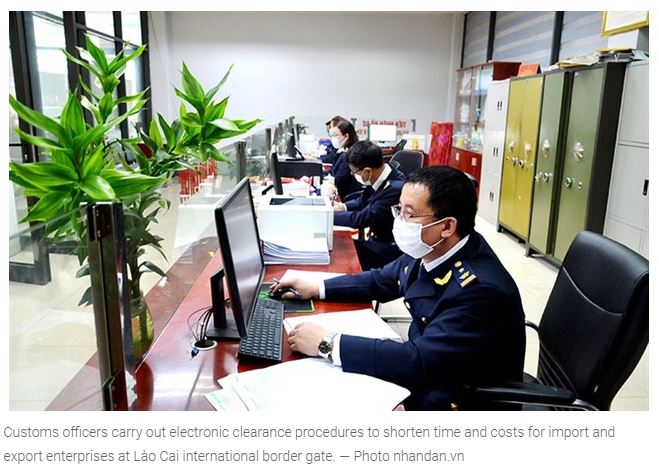Vietnam: Import, export turnover across northern border soars
The General Department of Customs said that the total import and export turnover with China across the northern border reached nearly US$9.3 billion in the first quarter of this year, up nearly three times over the same period last year.
HÀ NỘI — The northern border gates have been restored after three years of stagnation.
This helped Việt Nam’s import-export turnover with China through the northern border provinces increased by 242 per cent in the first quarter of this year over the same period last year.
The General Department of Customs said that the total import and export turnover with China across the northern border reached nearly US$9.3 billion in the first quarter of this year, up nearly three times over the same period last year.
In the northern border provinces, most of the border gates that were closed in the last months of last year due to the Chinese implementation of measures to prevent and control the COVID-19 pandemic have now become busy again.
Preliminary statistics from Lạng Sơn Customs Department show that border-gate customs units have received and processed 23,985 sets of import and export declarations with a turnover of $622,446 million by the end of March 14, an increase of 54.5 per cent over the same period last year.
In which, the number of export goods declarations registered by enterprises with 10,560 sets of declarations, valued at $284,386 million, an increase of 348.9 per cent year-on-year.
In Cao Bằng, import and export turnover through the locality also grew sharply, up to 60 per cent, reaching $69.5 million. Notably, export turnover rose by 214 per cent.
Import and export turnover through Lào Cai international border gate reached nearly $186 million in the first three months of this year.
Of this figure, exports reached $92.4 million, up 90.1 per cent over the same period last year. Imports reached $93.2 million, up 15.2 per cent.
Notably, agricultural products are still the main export products, reaching a turnover of more than $71 million, up 63.2 per cent year-on-year and accounting for 76.8 per cent of export turnover.
Similarly, the Móng Cái Border Gate Customs Sub-Department under the Quảng Ninh Customs Department revealed statistics that the total import-export turnover hit $504.96 million in the past three months; a 102.01 per cent increase in declarations.
Particularly, export goods of border residents grew by 288.96 per cent in declarations and 134.86 per cent in turnover over the same period last year.
In order to have this positive result, the customs offices located in these localities have made great efforts to coordinate with the functional forces to carry out customs procedures, inspect and supervise goods quickly to facilitate business timely delivery to the partner’s side.
Some provinces have reached agreements with the neighbouring country’s localities to increase the working time of the day to support businesses, said Bùi Minh Hải, a representative from the Customs Supervision and Management Department under the General Department of Việt Nam Customs, to Việt Nam Financial Times (Thời báo tài chính Việt Nam).
Despite many positives, it is undeniable that the import and export results with this important partner have not reached the same pace as before.
Part of the cause was determined to be due to side gates, as the openings are still frozen.
Hoàng Đức Hậu, deputy director of Cao Bằng Customs Department, said that the locality had many border gates, but the side border gates and openings still did not have import and export activities, therefore, they could not promote the strengths of a province that has many border gates adjacent to China.
So are Lạng Sơn, Lào Cai and Quảng Ninh, although the authorities have created maximum convenience for import and export activities in the area, but in order to further strengthen the customs clearance capacity, many recommended that localities needed to step up exchanges and talks at all levels with the Chinese side to restore side border gates and extend the working time of the functional forces on the Chinese side at border gates. — VNS


 Thailand
Thailand




